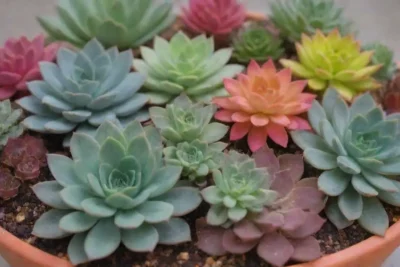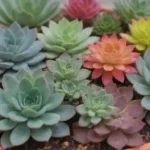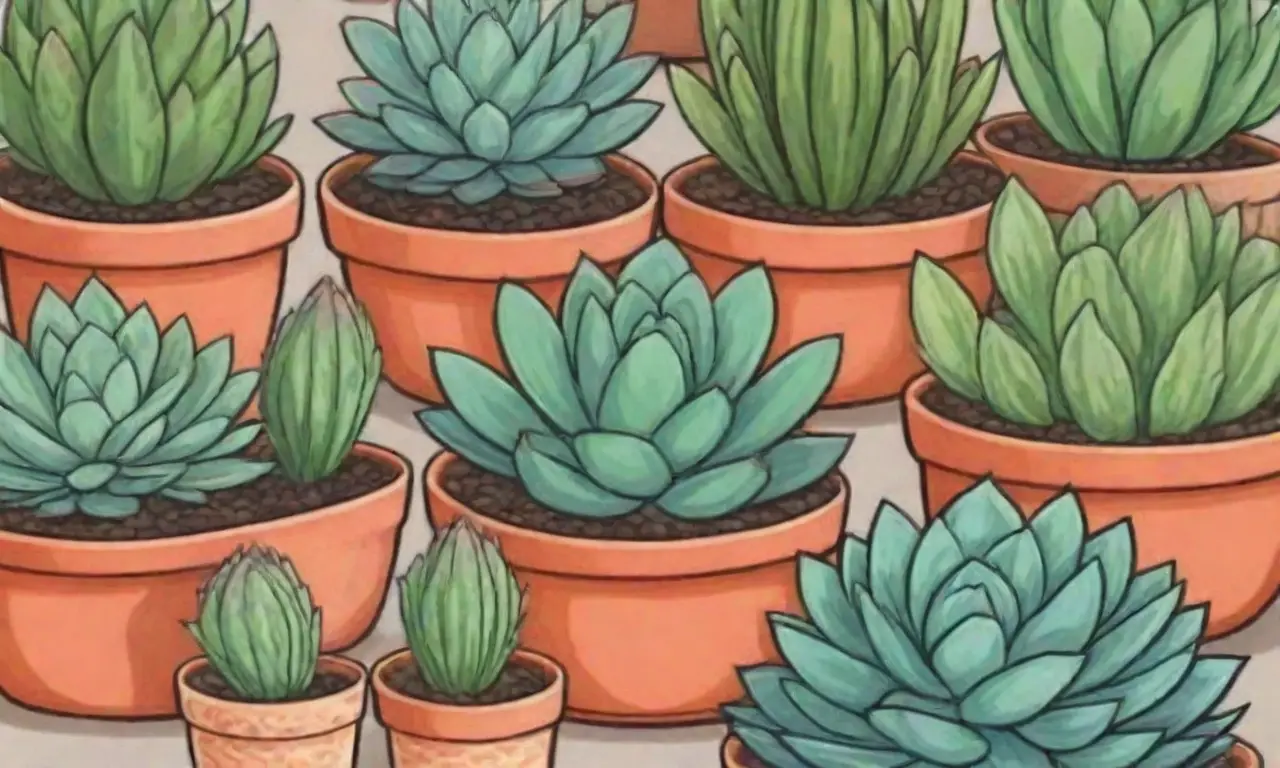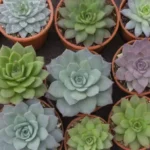
Understanding the Pictorial Wonders of Fenestraria Succulents

Introduction
Fenestraria succulents, with their captivating beauty and intricate designs, represent some of the most stunning examples of nature's artistry. Originating from the arid environments of Southern Africa, these plants, commonly known as "window plants," are characterized by their unique window-like structures that facilitate photosynthesis while protecting them against harsh sunlight. Their translucent leaves not only serve a functional purpose but also create an aesthetic marvel that draws the attention of both novice and experienced succulent enthusiasts.
This article aims to delve into the fascinating characteristics of Fenestraria succulents, exploring their unique adaptations, cultivation techniques, and the many ways they can enhance your indoor gardening. Given the increasing popularity of succulents in modern home décor and landscape design, understanding Fenestraria can inspire you to incorporate these unique plants into your own collection. We will discuss various species, care requirements, and even some tips on propagation to ensure you have the knowledge needed to successfully cultivate these enchanting specimens.
The Unique Characteristics of Fenestraria Succulents
Fenestraria succulents are part of the Aizoaceae family, which is recognized for its diverse range of succulent plants. What sets them apart from other types of succulents is their specialized leaf structures. Instead of conventional leaves, these plants possess fleshy, window-like leaves that are not only beautiful but also functional. The top layer of these leaves is transparent, allowing light to penetrate to the inner tissues without exposing them directly to the bright sun of their natural habitat. This adaptation is crucial for survival in environments where intense sunlight can otherwise lead to severe dehydration and damage.
Growth Habit and Morphology
Typically, Fenestraria succulents exhibit a rosette growth form, which contributes to their compact appearance. These plants typically grow low to the ground, with their leaves emerging from the central stem in a tightly packed manner. The leaves are usually thick, fleshy, and can vary in color from shades of green to a pale yellow, depending on the species and growing conditions. In some cases, they may even display a hint of pink or reddish hues at the tips, especially when exposed to sunlight.
Another unique feature of these plants is their seasonal growth pattern. Most Fenestraria species are dormant during the summer months, which aligns with the harsh conditions of their native environments. Instead, they thrive during the cooler months of fall and winter, making them an excellent choice for indoor gardeners who are interested in creating a garden that requires less attention during the hotter months. This also allows them to take advantage of natural sunlight when it is most beneficial for their growth.
Varieties of Fenestraria
There are several notable species within the Fenestraria genus, including Fenestraria rhopalophylla, commonly known as "baby toes" due to their plump, toe-like appearance. The leaves of this species are particularly striking, with their smooth surface and rounded tips. Another popular species is Fenestraria tuberculosa, which features a slightly different morphology with more pronounced tuber-like growth formations. Each species not only presents a different aesthetic but also offers various care requirements, which makes the exploration of this genus even more fascinating.
Cultivation and Care Guidelines
Growing Fenestraria succulents can be a rewarding experience, but it requires a basic understanding of their specific needs. These plants thrive in well-draining soil, ideally a cactus or succulent mix that allows excess water to escape swiftly. They prefer a sunny location, making them perfect candidates for south-facing windows where they can receive ample direct sunlight. However, caution must be exercised to prevent sunburn, especially during the peak hours of intense sunlight.
 The Do's and Don'ts of Growing Container Succulents Together
The Do's and Don'ts of Growing Container Succulents TogetherWatering Practices
One of the most critical aspects of caring for Fenestraria succulents is managing their watering schedule. During their active growth phase in the cooler months, they require moderate watering; the rule of thumb is to allow the soil to dry completely between watering sessions. Over-watering can lead to root rot—a common issue in succulent cultivation. In contrast, during the summer dormancy period, these plants prefer to remain on the dryer side, receiving little to no water. Consequently, understanding their natural growth cycle can significantly influence their health and longevity.
Additionally, using a proper watering technique can also make a notable difference. Instead of watering from above, aim to water from below by placing the pot in a saucer of water for a short time. This would allow the roots to absorb moisture gradually and avoid the risk of soggy leaves—a common pitfall for many succulent growers.
Fertilization Recommendations
Fertilization is another crucial aspect of Fenestraria care. While they don’t require heavy feeding, especially when growing in nutrient-rich soil, occasional fertilization can promote optimal growth. A diluted liquid fertilizer formulated for cacti and succulents can be applied during their growing season. This should be done sparingly—typically once every month or two—depending on the specific nutrient needs of your plant and the quality of your soil. Avoid fertilizing during their dormancy period, as this can contribute to stunted growth or other adverse effects.
Propagation Methods

For those eager to expand their collection or share the beauty of Fenestraria succulents with others, propagation methods are relatively straightforward. The two primary methods are through leaf cuttings and offsets. Leaf cuttings involve removing a healthy leaf from the mother plant, allowing the cut end to dry and callus for a few days before placing it in well-draining soil. Watering should be minimal until roots begin to develop, typically observed in a few weeks.
Offsets and Division
Offsets, or pups, are another wonderful way to propagate Fenestraria succulents. These are the small plants that grow around the base of the parent plant, sharing nutrients and resources. Gently remove these offsets with a clean knife or scissors, ensuring that some roots remain attached. Treat these new plants as you would mature ones, providing them with the appropriate light, soil, and watering conditions.
Propagation can be a rewarding experience, as it not only allows you to cultivate more plants for your own collection but it can also be a wonderful means of sharing with friends and family. Succulents make great gifts, and the thoughtfulness of sharing something you’ve nurtured from the start adds a personal touch to any present.
 10 Types of Succulents That Need Very Little Watering
10 Types of Succulents That Need Very Little WateringConclusion
In summary, Fenestraria succulents are not just plants; they are remarkable examples of how nature adapts and thrives in challenging environments. Their unique structures, varied species, and simple care requirements make them a favored choice for both novice and seasoned gardeners. Understanding the intricacies of their growth habits and specific care needs can lead to a rewarding gardening experience that highlights the beauty that these plants offer.
As you incorporate Fenestraria into your indoor garden, you’re not only bringing life to your space but also enriching it with uniqueness and botanical artistry. Whether you choose to propagate your plants or decorate your home with them, the joy they bring is immeasurable. Embrace the pictorial wonders of Fenestraria succulents and let them illuminate the beauty of your living environment. With their enchanting presence, you'll be adding a touch of nature's beauty to your home, creating an oasis filled with life, artistry, and resilience.
If you want to read more articles similar to Understanding the Pictorial Wonders of Fenestraria Succulents, you can visit the Types of Succulents category.

You Must Read